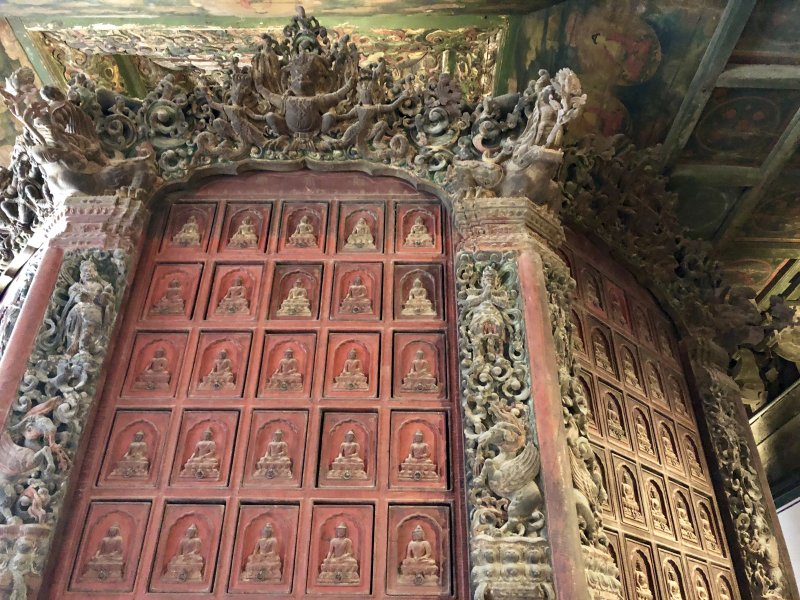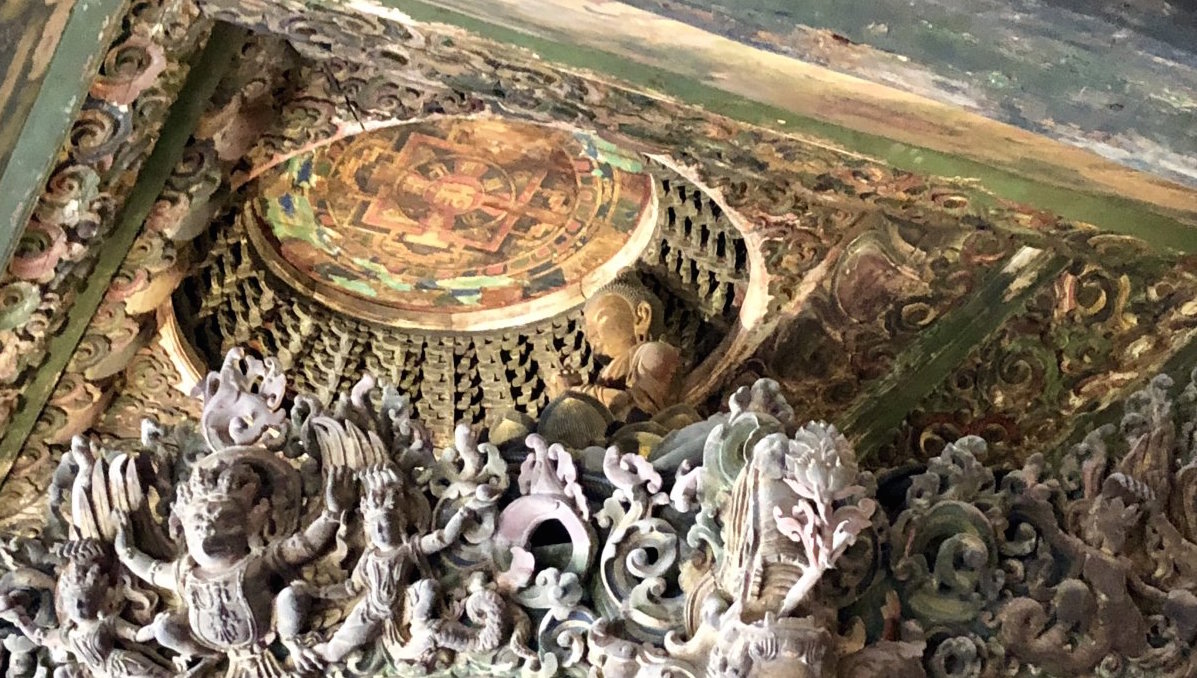Excellent Ming-Era Architecture and Artifacts on Display at Re-Opened Zhihua Temple
Zhihua Temple, one of the best-preserved repositories of Ming-era architecture and artifacts in the city, has reopened after extensive renovations, and the results are much better than your average Beijing tourist site.
"The biggest highlight of the temple is now the ancient architecture itself," Yang Zhiguo, deputy director of the administration office for the Zhihua Temple told the China Daily.

Originally built in 1444 on the orders of court eunuch Wang Zhen (d. 1449), the temple has managed to survive into the 21st century, despite being surrounded by the detritus of modern Beijing including the looming futurism of nearby Galaxy Soho.
Wang Zhen rose to power during the reign of the young and inexperienced Ming emperor Zhu Qizhen (1427-1464). The crafty palace servant took advantage of the naive and immature monarch to become one of the most powerful figures at court. Wang Zhen became so influential in fact that he was able to have a temple in his honor constructed in the capital which included many architectural features – including dragon ceilings – usually reserved for imperial palaces.
Unfortunately, the notorious eunuch wasn't able to enjoy his temple for very long. In 1449, Wang Zhen was killed during the Tumu Crisis when an army led by Zhu Qizhen was routed by Mongolian forces. The emperor wasn't among the dead, but when the fleeing Ming troops returned to Beijing they realized that they had accidentally left him behind on the battlefield. No worries though, the Mongolians picked him up and made him comfortable for 14 months before setting him loose and sending him back to a Ming court in complete disarray.
In the 18th century, a historian of the Qing Empire, Shen Tingfang (1692-1762) noticed that there was a temple in the capital where people still worshipped a statute of Wang Zhen. Knowing the story of the wicked eunuch, Shen Tingfang submitted a memorial to the Qianlong Emperor (1711-1799) asking the emperor to order the statue burned to remind people of the perils of corruption.

The destruction of the statue ironically led to the preservation of the temple. The Qianlong Emperor was famous (some would say notorious) for his reconstruction projects. Many of Beijing's more famous Ming-era sites were "improved" by the Qianlong Emperor's energetic attempts to beautify his capital. Since the Zhihua Temple had been mostly abandoned after Shen Tingfang's anti-eunuch hissy fit, the Qianlong emperor never bothered with it.

Today, the temple features some of the best-preserved architecture and artifacts from the Ming-era including original wooden beams and brackets. Even the bell in the bell tower dates from the 15th century. An excellent exhibit on the temple's construction shows photos taken in the 1930s alongside pictures of the current structures. The buildings have clearly been repainted and in some places, sagging rooftops and crumbling tiles have been repaired, but the basic structures remain more or less the same.

Unfortunately, 75 percent of the original complex no longer exists (this is Beijing, after all) and several important architectural features, including two exquisite carved dragon roof caissons and several statues, were removed. The two caissons are now in museums in the United States.
The Zhihua Temple actually gained a set of statues during the 1960s. According to a volunteer at the temple, at the time of the Cultural Revolution, the temple served as a warehouse to store feudal icons and several statues and a fresco which once graced other Beijing shrines now reside at the Zhihua Temple.

The temple is continuing its tradition of musical performance with daily concerts of music performed on traditional instruments at 10 am and 3 pm. (Sadly, when we were there, performances had been suspended until after the New Year holiday.) A traditional music festival will also be held at the temple in late April although details included dates and the program have yet to be released.
In a city where "historical preservation" is usually code for "we ripped it down and complete reimagined it from scratch," Zhihua Temple remains one of the few places to see carpentry, stonework, carvings, and ornamentation from the Ming Dynasty, making it worth a visit.
The Zhihua Temple is open Tuesday to Sunday, 8.30am-4.30pm. Admission is RMB 20. Audio guides are available in several languages and the temple also has a team of very helpful volunteers, many of whom only speak Chinese, but upon our visit one of the volunteers, Mr. Xue Bing, provided an excellent English-language explanation and commentary on the temple and its architecture.
Zhihua Temple
5 Lumicang Hutong, Dongcheng District
智化寺:东城区禄米仓胡同5号
Photos: Jeremiah Jenne


